
The thrushes are a passerine bird family, Turdidae, with a worldwide distribution. The family was once much larger before biologists determined that the former subfamily Saxicolinae, which includes the chats and European robins, are Old World flycatchers. Thrushes are small to medium-sized ground living birds that feed on insects, other invertebrates and fruit. Some unrelated species around the world have been named after thrushes due to their similarity to birds in this family.
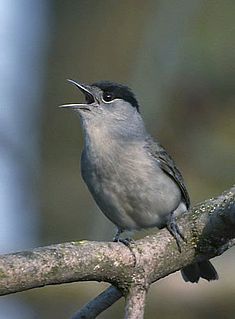
Sylviidae is a family of passerine birds that includes the typical warblers and a number of babblers formerly placed within the Old World babbler family. They are found in Eurasia and Africa.
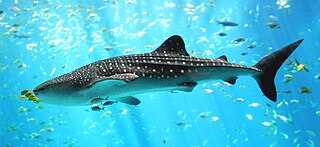
Carpet sharks are sharks classified in the order Orectolobiformes. Sometimes the common name "carpet shark" is used interchangeably with "wobbegong", which is the common name of sharks in the family Orectolobidae. Carpet sharks have five gill slits, two spineless dorsal fins, and a small mouth that does not extend past the eyes. Many species have barbels.

Gesneriaceae, the gesneriad family, is a family of flowering plants consisting of about 152 genera and ca. 3,540 species in the tropics and subtropics of the Old World and the New World, with a very small number extending to temperate areas. Many species have colorful and showy flowers and are cultivated as ornamental plants.

Myosotis is a genus of flowering plants in the family Boraginaceae. The name comes from the Ancient Greek μυοσωτίς "mouse's ear", which the foliage is thought to resemble. In the northern hemisphere they are colloquially denominated forget-me-nots or scorpion grasses. The colloquial name "forget-me-not" was calqued from the German Vergissmeinnicht and first used in English in AD 1398 through King Henry IV of England. Similar names and variations are found in many languages. Myosotis alpestris is the official flower of Alaska and Dalsland, Sweden. Plants of the genus are commonly confused with Chatham Islands' forget-me-nots which belong to the related genus Myosotidium.

Lonchura is a genus of the estrildid finch family, and includes munias and mannikins. They are seedeating birds that are found in Africa and in South Asia from India, Bangladesh, Sri Lanka east to Indonesia, Papua New Guinea, and the Philippines. The name mannikin is from Middle Dutch mannekijn 'little man'.

Grigory Lipmanovich Sokolov is a Russian pianist. He is among the most esteemed of living pianists, his repertoire spanning composers from the Baroque period such as Bach, Couperin or Rameau up to Schoenberg and Arapov. He regularly tours Europe and resides in Italy.
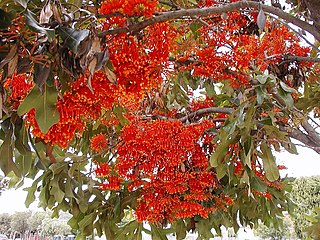
Stenocarpus is a genus of about 22 species of flowering plants in the family Proteaceae. They are trees or shrubs with variably-shaped leaves, zygomorphic, bisexual flowers, the floral tube opening on the lower side before separating into four parts, followed by fruit that is usually a narrow oblong or cylindrical follicle.

The Bulgaria men's national volleyball team is controlled by the Bulgarian Volleyball Federation, which represents the country in international competitions and friendly matches.
Tectiphiala ferox, or palmiste bouglé, is a species of flowering plant in the family Arecaceae. It is endemic to Mauritius.

The tribe Tragelaphini, or the spiral-horned antelopes, are bovines that are endemic to sub-Sahara Africa. These include the bushbuck, kudus, and the elands. The scientific name is in reference to the mythical creature the tragelaph, a Chimera with the body of a stag and the head of a goat. They are medium-to-large, tall, long-legged antelopes characterized by their iconic twisted horns and striking pelage coloration patterns.
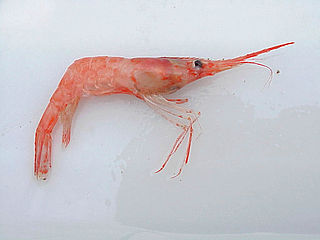
Pandalus is a genus of shrimp in the family Pandalidae. Members of the genus are medium-sized and live on or near the seabed. Some species are the subject of commercial fisheries and are caught by trawling. One species, Pandalus montagui, lives in association with the reef-building polychaete worm, Sabellaria spinulosa.
Geocharidius is a genus of ground beetles in the family Carabidae. There are about 18 described species in Geocharidius.

Pelodiaetus is a genus of ground beetles in the family Carabidae. There are at least two described species in Pelodiaetus, found in New Zealand.
Serranillus is a genus of ground beetles in the family Carabidae. There are at least three described species in Serranillus, found in the United States.
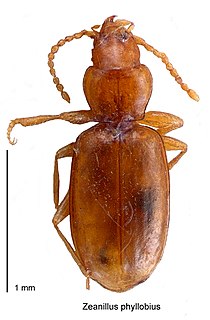
Zeanillus is a genus of ground beetles in the family Carabidae. There are about 10 described species in Zeanillus, found in New Zealand.

Bembidiini is a tribe of ground beetles in the family Carabidae. There are more than 120 genera and 1,200 described species in Bembidiini.
Iliotona is a genus of clown beetles in the family Histeridae. There are about five described species in Iliotona.

Xiphidiata is a suborder of Plagiorchiida, an order of parasitic flatworms (flukes).
Zapotecanillus is a genus of ground beetles in the family Carabidae. There are about eight described species in Zapotecanillus.















